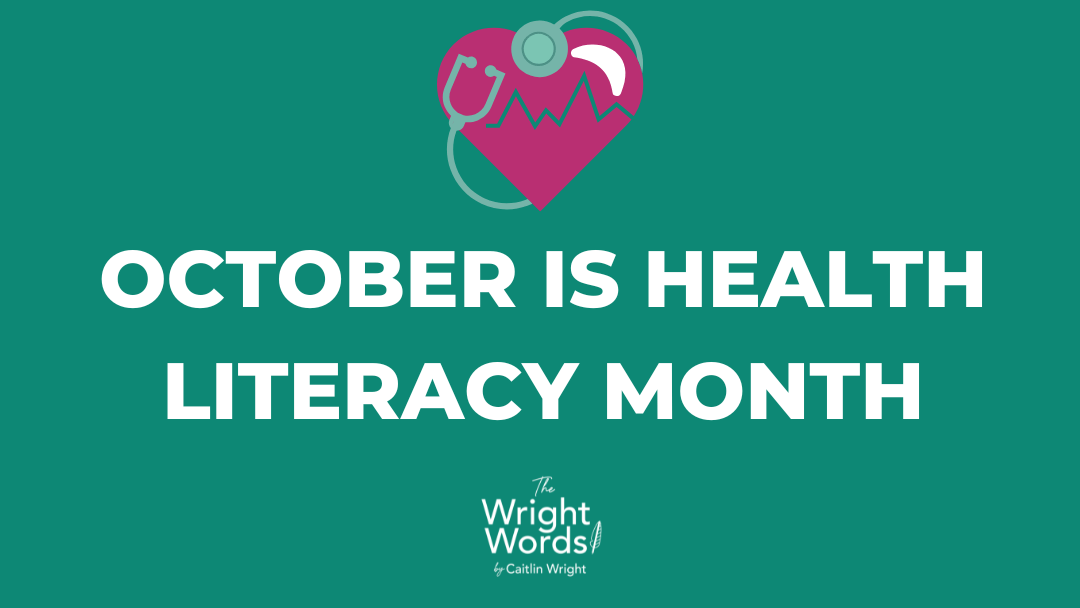October is Health Literacy Month. According to the Australian Commission on Quality and Safety in Health care, almost 60% of adult Australians have low individual health literacy.
What is health literacy?
Health literacy is how a person finds, understands, and uses health information to make informed decisions about their healthcare. It involves not only reading and understanding medical terms but also being able to apply this information in everyday situations, like following instructions for medication or preparing for a medical procedure.
When a person has low health literacy, it limits their ability to make informed healthcare decisions. This can often lead to more frequent use of health services and poorer health outcomes.
A person’s health literacy can be impacted by:
- Age – research has found people aged 15–19 years and over 45 years have lower rates of health literacy
- Education – lower levels of education are associated with lower rates of health literacy
- Disability – a person living with disability may be at risk of lower health literacy. This can be because of functional reasons such as low vision or cognitive impairment.
- Culture and language – difficulty with English has been associated with lower rates of individual health literacy. Cultural differences can also affect how people make meaning out of their experience which can impact their understanding of health issues.
- Aboriginal and Torres Strait Islander status – it’s believed some factors such as lower school-based literacy and socioeconomic disadvantage across may mean some Aboriginal and Torres Strait Islander people are at risk of lower individual health literacy.
How can clear communication improve health literacy?
Recently, I had a personal experience of the importance of health literacy and how crucial clear communication is.
One of my kids fractured her wrist falling off the monkey bars. Obviously she was pretty scared and in pain, but our amazing doctors and nurses made everything better with a cast, lots of care and a well-timed lemonade ice block.
What truly impressed me, though, was the healthcare professionals’ mastery of health literacy. I watched them interact with patients of all backgrounds, some with limited English, others unfamiliar with medical terms. Despite their busy schedules, they made sure each patient and parent felt understood and reassured.
This experience is a great reminder for all of us, especially those of us writing health content, to prioritise clarity and empathy in our communication.
Here’s what I learned from the paediatric team that we can apply to writing health content:
1. Use Plain Language
When discussing my daughter’s injury, the doctors, nurses and physiotherapists didn’t launch into technical jargon. Instead, they used the term “buckle fracture,” a simpler way of describing the injury, and followed it with a detailed explanation. It made everything easier to understand, and I didn’t feel lost in medical terminology.
Similarly, when writing health content, it’s important to use plain language that your audience can easily grasp. If you need to use technical terms, be sure to define them in a way that’s relatable.
For example, instead of saying:
Utilise the inhaler by depressing the canister while inhaling deeply.
You could say:
Press down on the inhaler while taking a deep breath in.
Aim for a reading level appropriate for a younger audience—around the ages of 9-11 is a good benchmark. You can test readability using tools like the Hemingway App.
2. Organise Content Logically
When under stress, we need information quickly. As soon as the X-ray results were in, the doctor didn’t waste any time. She got straight to the point, explaining what had happened and how we were going to fix it.
The same principle applies when writing health content. Prioritise the most important information first and make it easy to digest.
It’s also important to organise the content in a way that is easy to read and understand. For example, you could:
- Use bullet points or numbered lists to highlight key points (see?!).
- Break up information into short paragraphs.
- Use clear headings.
This helps readers scan the content quickly and efficiently.
3. Be Mindful of Tone
What really helped my daughter and I was the reassuring, non-judgmental tone of the doctors and nurses. They made us feel cared for, supported, and understood, which calmed our nerves during a stressful time.
This is equally important in writing health content. Consider this tone of voice: “If you don’t follow your treatment plan, your condition won’t improve. You can ask for help if you need it.”
Compare this with: “Following the treatment plan can be challenging, but it is important for improving the condition. There are ways to make it more manageable, and support is available to help along the way.”
The second example has a calm, empathetic voice. It can make your audience feel supported, which means they’re more likely to take your advice seriously and act on it.
4. Include Visuals
One of the things that helped me the most was seeing the X-ray. The visual gave me a clear understanding of what was happening and what we needed to do next. You’ve probably heard the expression ‘a picture tells a thousand words’. Sometimes, visuals communicate things that words simply can’t.
If you’re explaining complex health topics, consider using visuals to help. Some you might consider include:
- diagrams
- charts
- illustrations
- photos
- infographics
- icons
Depending on the topic, they can help reinforce your message and give someone a break from reading text. Visuals can be especially helpful when describing medical procedures or anatomy.
The Importance of Health Literacy
Whether you’re a healthcare professional or a health writer, making health information clear and accessible is essential. If you need help with your patient information resources or health articles, get in touch. Together, we can make sure every patient gets the information they need to make informed choices about their health.

